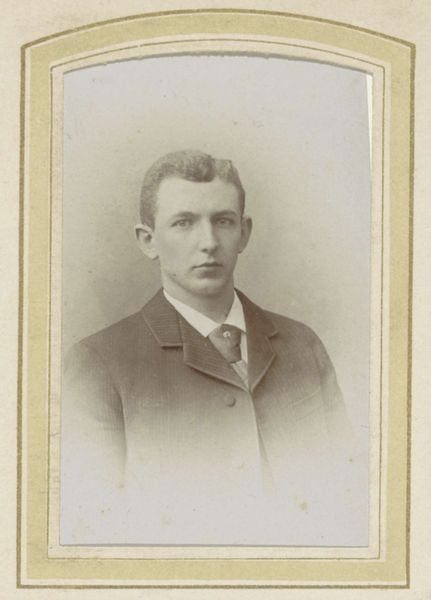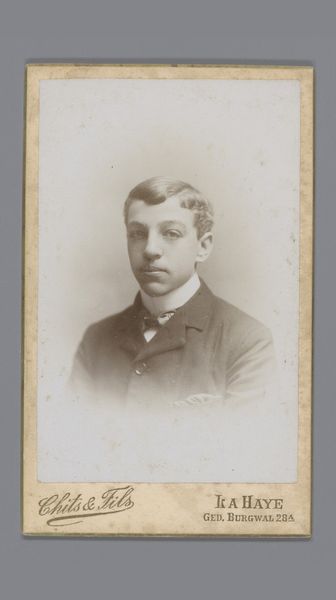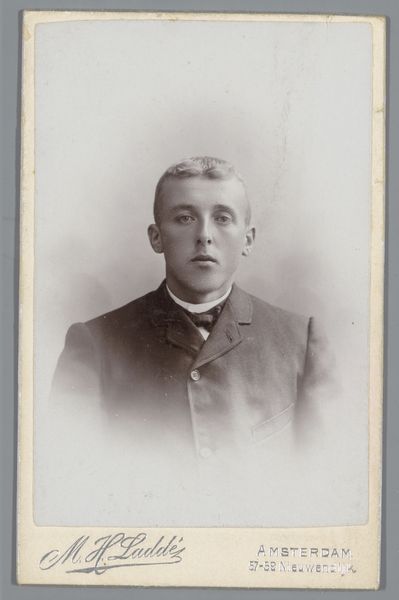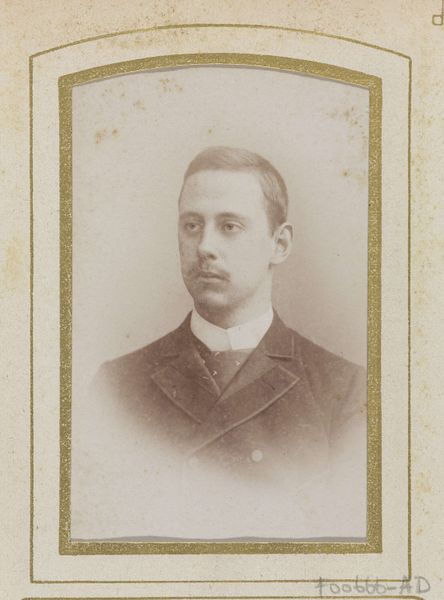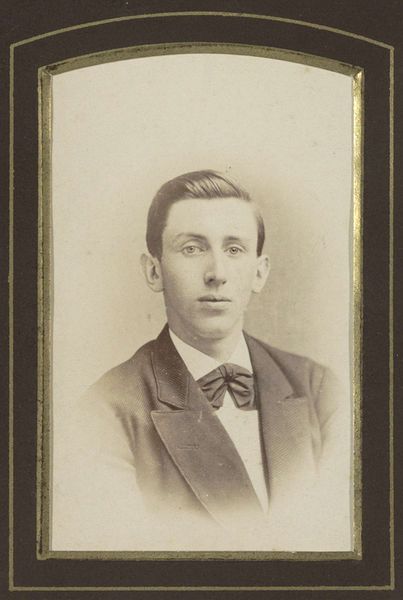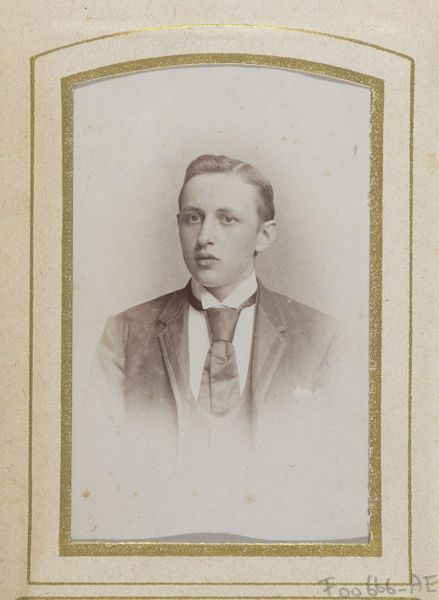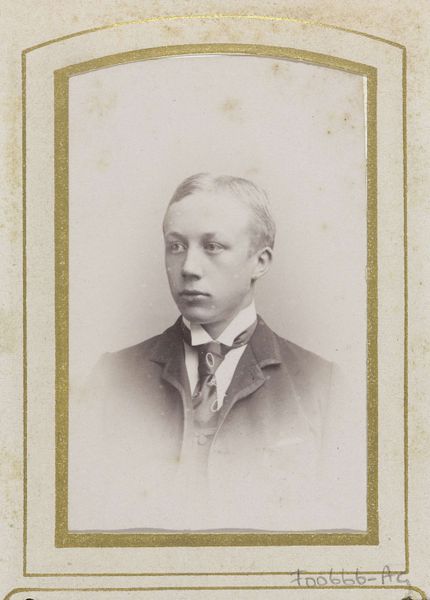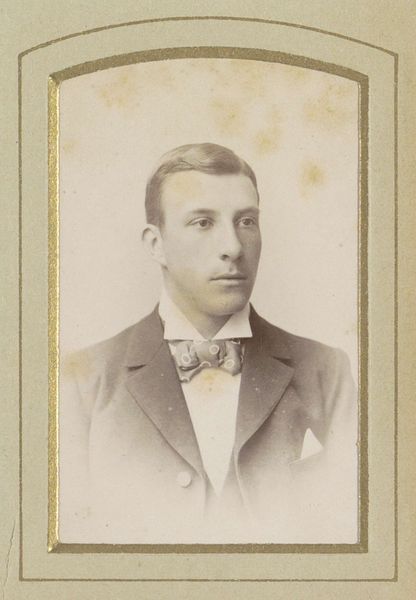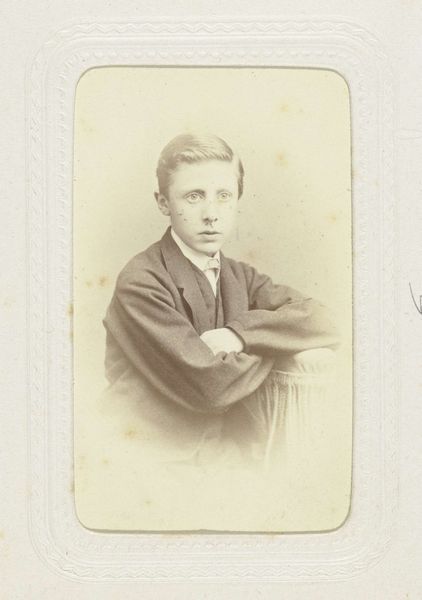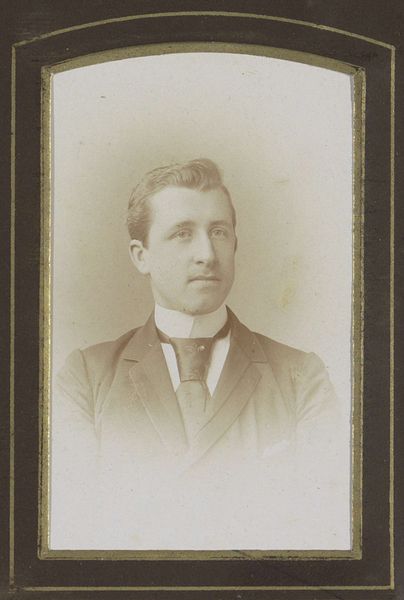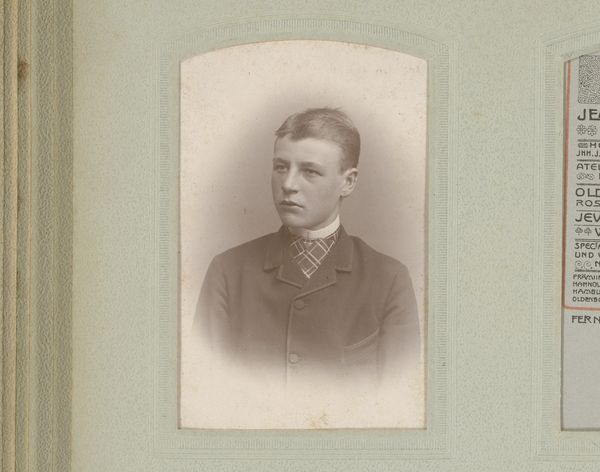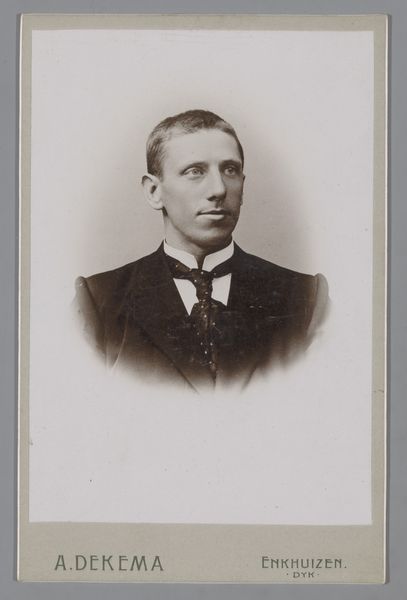![Portret van een jonge man, aangeduid als H.[...] de Vries by Adolphe Zimmermans](/_next/image?url=https%3A%2F%2Fd2w8kbdekdi1gv.cloudfront.net%2FeyJidWNrZXQiOiAiYXJ0ZXJhLWltYWdlcy1idWNrZXQiLCAia2V5IjogImFydHdvcmtzLzYxY2NkNGY4LTk4NmYtNGE0My05ZDIwLTUyMDk1NTNmZjdjYy82MWNjZDRmOC05ODZmLTRhNDMtOWQyMC01MjA5NTUzZmY3Y2NfZnVsbC5qcGciLCAiZWRpdHMiOiB7InJlc2l6ZSI6IHsid2lkdGgiOiAxOTIwLCAiaGVpZ2h0IjogMTkyMCwgImZpdCI6ICJpbnNpZGUifX19&w=3840&q=75)
photography, albumen-print
#
portrait
#
16_19th-century
#
photography
#
historical photography
#
19th century
#
albumen-print
#
realism
Dimensions: height 83 mm, width 52 mm
Copyright: Rijks Museum: Open Domain
Editor: So, this is Adolphe Zimmermans’ “Portret van een jonge man, aangeduid als H.[...] de Vries,” made in 1889. It's an albumen print, which gives it this kind of sepia-toned feel. I find it really striking, how formal it feels, but there’s also something a bit unsettling in the young man's eyes. What strikes you most about this image? Curator: What stands out for me is how photography was being used as a tool for social construction at the time. These formal portraits, like this one, weren’t just about capturing likeness. They were carefully staged to convey specific ideas about social standing, respectability, and even ideas about masculinity. The rise of photography coincided with a period of intense social stratification and the desire to visually categorize and define individuals within the social hierarchy. Does that somber look contribute to that feeling of imposed social expectation, perhaps? Editor: Definitely. I hadn't thought about the "performance" aspect of the portrait beyond just posing stiffly. Was there also an aspect of control in who even *got* their portrait taken? Curator: Precisely! Access to photography wasn't universal. Who got memorialized through images was very much tied to economic power and social status. This portrait suggests the sitter possessed some level of privilege. Furthermore, these images then circulate, reinforcing existing social norms. The image *itself* then has a role to play. Who does this young man remind you of? Editor: Hmm, interesting point. Maybe he seems vaguely familiar because I've absorbed so many similar images over time. I'm starting to see this photo less as just a record and more as a piece of social machinery. Curator: Exactly. Thinking about the image in this way allows us to consider not just its aesthetic qualities, but also its active role in shaping and perpetuating the social and political landscape of the time. Editor: Thanks, that completely reframed how I see it. From a static portrait to a piece of a larger societal puzzle.
Comments
No comments
Be the first to comment and join the conversation on the ultimate creative platform.

